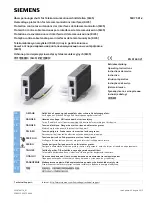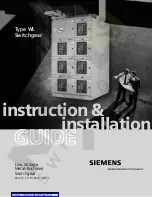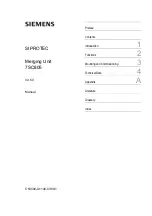
Section 3
Vendor-specific implementation
3.1
DNP3 link modes
3.1.1
DNP3 TCP/IP mode
GUID-6257BE0D-01CA-44C7-92A6-A4B20BF79DBB v4
DNP3 TCP/IP link mode is supported by the IED. This implementation supports up to
four different masters communicating simultaneously with the IED. The IED is a
listening endpoint implementation and listens for connections from DNP3 masters on a
configurable port,
TCPIPLisPort
. The IED does not connect to masters, meaning that it
is not a dual-endpoint implementation.
It is possible to use both the connection establishment method based on the master IP
address, and the connection establishment method based on the port number. The
identification and association of the master is based both on the IP address of the
master and the port number it connects to. It is essential to make sure that the
parameters
TCPIPLisPort
,
MasterIP-Addr
,
MasterIPNetMask
,
SlaveAddress
and
MasterAddress
uniquely identifies one master from the other masters.
The above is an important concept to grasp during commissioning so that no conflicts
occur. Therefore, it is strongly recommended not to change the
MasterIPNetMask
parameter to anything else than its default 255.255.255.255 unless necessary. The
parameter should not be mixed up with the subnet mask of the IP configuration. The
MasterIPNetMask
can be used to allow to accept connections from masters that do
have dynamic IP addresses within a known range.
For example, if a master changes its IP address dynamically in the range of 10.10.10.1
and 10.10.10.254, the
MasterIPNetMask
could be set to 255.255.255.0 to allow for
connections from this range. If two masters share this dynamic range or share the same
IP address, it is necessary to separate them by having them connect to separate ports,
for example, 20000 and 20001 respectively.
Also,
SlaveAddress
and
MasterAddress
must be correctly configured for each master.
Otherwise, the previously accepted connection is closed upon the reception of the first
DNP3 message.
The IED supports the requirements of the standard to receive UDP broadcast messages
on the ports configured by
UDPPortAccData
.
As a default, the IED sends a keep-alive message in every 10 seconds according to the
value of the
tKeepAliveT
parameter. The time can be changed, and setting it to zero
1MRK 511 413-UUS B
Section 3
Vendor-specific implementation
650 series 2.2 ANSI
15
Communication protocol manual
















































